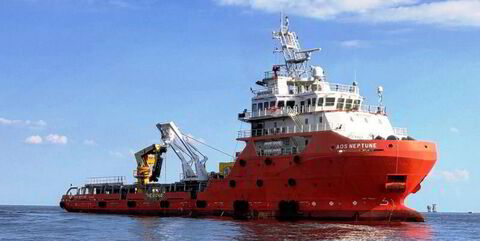Singapore’s Grindrod Shipping is reducing debt as rates in the fourth quarter rise for its bulkers.
The company, owned by London-listed Taylor Maritime Investments (TMI), said handysize time charter equivalent earnings were $9,744 per day in the third quarter and $12,380 for supramax/ultramax vessels.
This has already been surpassed in the fourth quarter.
Grindrod has booked 1,286 handysize operating days at an average of $10,040 per day.
Supramaxes and ultramaxes have fixed 1,449 operating days at $15,235.
The third-quarter net loss was $8.5m, against profit of $22.1m a year ago.
The 26 ships brought in revenue of $112.4m from $107m.
The accounts showed the cost of ship sales knocked $57m off the bottom line, but Ebitda was $11.2m.
Chief executive Edward Buttery, also CEO of TMI, said: “We have had a productive quarter.”
Debt has been cut through maturity and repayments.
Management integration
“In total, we have now paid $36.1m of bank debt since the start of the year, equating to a reduction in interest payments of $1.9m on an annualised basis,” the CEO said.
Ship sales worth $69.7m were contracted between July and September.
The integration of the TMI and Grindrod management teams has begun, Buttery added.
He expects this to “unlock further commercial synergies and technical savings, all while maintaining an attractive core of modern Japanese geared bulk carriers”.
Grindrod outperformed the Baltic indices through the period, he added: “Overall, we maintain a favourable outlook for the geared dry bulk segment and we remain committed to continuing to reduce debt and improving our position to deliver long-term value to shareholders.”
Grindrod said it exercised an option to extend the firm charter-in period of the 62,700-dwt IVS Atsugi (built 2020) from Nisshin Shipping of Japan for 12 months at a pre-agreed fixed rate, starting from 30 December.
VesselsValue reports the first year fixed at $12,200 per day, with the option at $13,700 and a purchase option at $22.5m.
Grindrod intends to transition to semi-annual reporting from December, to reduce the cost and time required to prepare and file quarterly statements.




